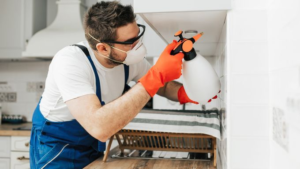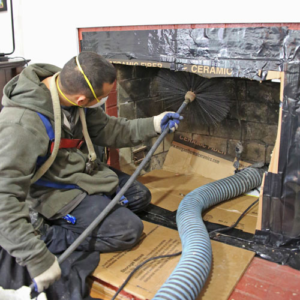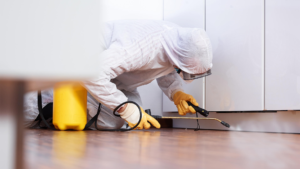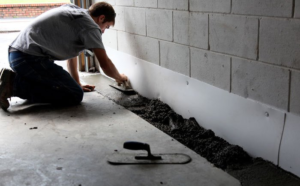Keeping drains clean is important to protecting the longevity and efficiency of your plumbing system. It also helps prevent dangerous pathogens, such as bacteria, mold, and mildew, from developing in your home.
Regular drain cleaning can prevent costly repair bills in the future. Switch to a natural drain cleaner instead of harsh chemical cleaners. Contact Drain Cleaning Perth now!

Chemical drain cleaners are heavier than water, allowing them to sink through standing water and reach a clog. They contain acids, bases or oxidizers that travel down the pipes and interact with the material in the clog to break it apart or dislodge it. These products are readily available at retail stores and can be extremely effective for removing soft hair, grease or paper clogs. However, they are not suitable for all clogs and can cause serious damage to pipes if used incorrectly or on a regular basis.
These products can generate harmful fumes that may irritate the eyes, nose and throat. They also create chemical burns if they come into direct contact with skin. Inhaling these chemicals can lead to respiratory problems including coughing, shortness of breath and even lung damage. They can also corrode or deteriorate metal pipes such as galvanized iron.
Caustic drain cleaners are typically in powder or liquid form. They contain sodium hydroxide (also known as lye) which breaks down grease, fats and oils by creating heat and causing them to lose electrons. The resulting water-soluble substance can then be flushed away. Caustic drain cleaners are very effective for removing stubborn grease clogs and can also dissolve some types of paper debris. They are not recommended for use on plastic pipes, which can be damaged or cracked by the caustic action of the cleaner.
Hydro-Jetting
When regular drain cleaning methods don’t cut it, you may need something more powerful. This is where hydrojetting comes in. It is a great solution for situations where recurring clogs are causing serious problems like slow drains and contaminated water. A licensed plumber with a hydrojetter can quickly and safely clear even the toughest of blockages.
Using high water pressure, hydro jetting blasts through clogs, removes tree roots and washes away mineral build up. It is a cost-effective way to restore your pipes to their like-new condition, and it can be done within an afternoon.
Your plumber inserts a jetting hose into your household or sewer lines and pumps in the water at a pressure of up to 35,000 psi. This is a powerful amount of water, and your plumber will carefully adjust the level of pressure to match your pipe conditions.
Once the plumber has positioned the nozzle of the hydrojetting machine at the location of the clog, he or she will pull the trigger to start spraying water out of the nozzle. The high-pressure water will dislodge and break up the clog, and it can also clear out any debris that has collected along the drain walls. There are many different nozzles available, including fixed orifice nozzles that produce a steady stream of water, and variable orifice nozzles that can be adjusted to target specific types of clogs.
Enzymatic Foam Cleaner
Enzymatic cleaners contain a blend of biologically friendly bacteria and enzymes. These cleaners break down and dissolve organic stains and soils like food particles, hair, feces, and mucous. They are also more environmentally friendly and biodegradable than traditional chemical drain cleaners.
One major drawback of these products is that they take much longer to work than traditional chemical drain cleaners. The enzymes and bacteria in the drain cleaner need to eat through the clog material before they can effectively clean it out of your pipes. This process can take days, weeks, or even months. As such, these products should be used for regular drain maintenance and not to immediately address a blocked drain.
When using an enzymatic cleaner, it’s important to dilute the product with at least one cup of water per tablespoon of the cleaner. This ensures that the bacteria and enzymes will have enough water to get to work. It’s also recommended that you use a drain cover to prevent food particles and other debris from falling into your pipes while the enzymes are working.
Vigor is an enzymatic foam cleaner that’s perfect for animal care teams and vivarium staff who need to clean small spaces with tight corners. This liquid dual-enzyme and detergent formula is effective at breaking down hard to reach soils, including blood, vomit, urine, feces, cellulose, starch, sebum, and fatty acids.
Pipe Inspection
Pipe inspection is a useful tool for determining the condition of pipes. It can be used to detect corrosion, manufacturing problems, or other defects. It can also be used to measure wall thickness, and to determine whether the remaining wall thickness is within safety requirements. This type of inspection can be performed using a variety of methods, including ultrasonic testing, magnetic particle testing, fluorescent dyes, and radiographic testing.
While it may be tempting to just have your plumber snag a snake and get the job done, it’s often a good idea to have a full-scale drain and sewer line inspection. It allows the plumber to see what is in the pipeline and to make a more accurate assessment of the problem, and it can also help them decide what kind of cleaning solution is best.
It’s a common thing for items to slip down the drains, especially jewelry like wedding rings or earrings that have been dropped while doing dishes. It’s also not uncommon for tree roots to invade sewer lines, causing cracks and leaks. Having a video inspection can help the plumber find these problems and intercept them before they cause too much damage.
A video pipe inspection is also a great tool to have when submitting a claim to your insurance company. It helps show the exact location and condition of the issue, which can be helpful for getting your insurance coverage to cover a repair or replacement bill.





